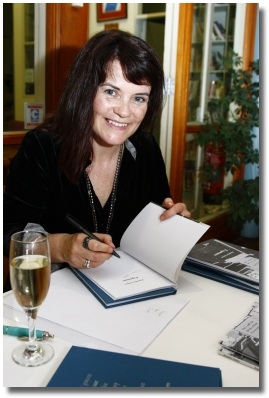Robert and I love a good 'ripping yarn', which is why we were really looking forward to seeing the remake of the 1951 classic sci-fi film 'The day the Earth stood still'.
But it didn't deliver. In a big way.
It should have been renamed 'The day no-one really understood why the Earth stood still'.
SPOILER ALERT: stop reading this now if you intend to watch the movie!
The nub of the original version is this: an alien called Klaatu lands on Earth and wants to address a group of world leaders to warn them that if the people of Earth threaten to extend their violence into space, Earth will be destroyed.
Klaatu demonstrates that the aliens have the power to fulfil this threat by bringing the world to a standstill. All machinery, transport, and electricity are shut down. Because Klaatu has already warned a group of the world's leading scientists and his warning has been broadcast, all human beings witness proof of the aliens' power to follow through on their threat.
Unfortunately the remake glosses over this point and completely underplays the movie title's promise. Yes, Klaatu explains to the protagonists about impending disaster. However, Klaatu doesn't address world leaders, nor does he explain to humankind the reason for his visit. So when the aliens cause the Earth to stand still in the remake, it's incidental. Human beings wouldn’t understand the significance or relevance of the event.
You may be asking why I'm complaining about a disappointingly bad remake of a science fiction movie.
My point is this: if you have an intriguing headline or promise, you'd better deliver.
If you insist on tantalising your prospects with a headline oozing promise and curiosity, you'd better be sure that you explain yourself and the reason why – and you'd better make certain that the explanation has everything to do with the headline.
Otherwise you'll disappoint and frustrate the hell out of your clientele!
Remember to mind your language (especially if you're an alien).
Sunday, December 28. 2008
What a bad remake of a good movie can teach us about headlines
Saturday, December 6. 2008
Go ahead: judge a book by its cover
 Some people concern themselves only with the content of a book. To them, it doesn’t matter what the book looks like. For these people, content is king.
Some people concern themselves only with the content of a book. To them, it doesn’t matter what the book looks like. For these people, content is king. For others including me, however, it’s a different story.
What the book looks like matters just as much as what’s written inside. I collect books. I love first editions. I love books with a provenance, with a story attached.
For example, one of my most prized books is an edition of Charles Dickens’ The Old Curiosity Shop which is signed by Florence Nightingale.
When I set out to put together my second collection of poetry, 17 poems: one for every year of innocence, I wanted it to be different from traditional poetry collections.
I wanted to present the poems beautifully. I wanted the book to be hand bound. I wanted a gorgeous cover. I wanted a book that would be a delight to touch, hold and feel. I wanted it to be a trophy on a book shelf.
And if people liked the poetry inside, well, that’d be a bonus!
17 poems: one for every year of innocence is a limited edition: there are only 150 printed in this particular design and format. This adds to the special feel of the book.
The other unusual aspect of the book is that each volume includes a CD of me reading the poems. This adds another dimension to the experience and helps to make poetry more accessible to those who are more 'auditory' than 'visual'.
The saying ‘don’t judge a book by its cover’ does not apply here. Please feel completely free to judge it by its cover.
And remember: mind your language!
(Page 1 of 1, totaling 2 entries)

